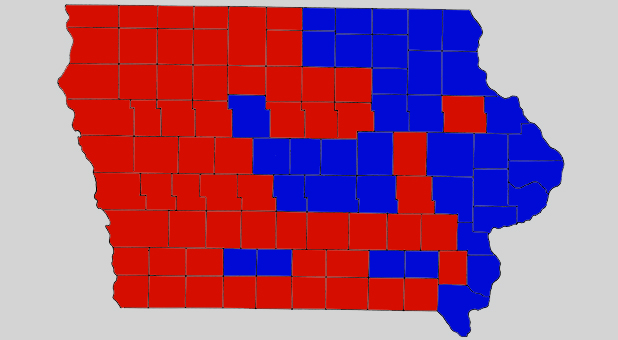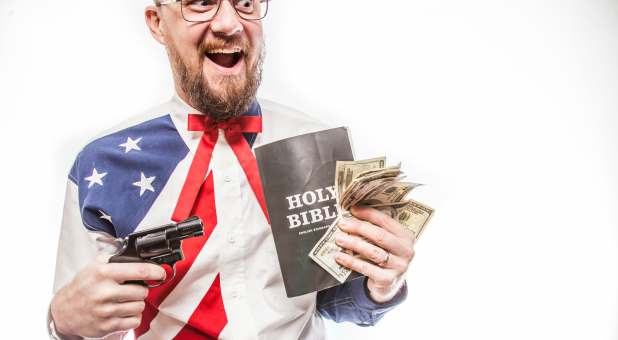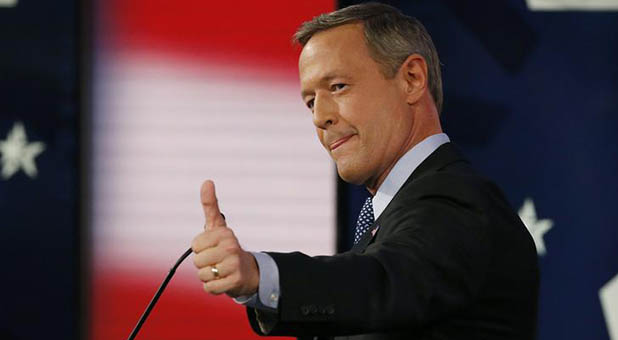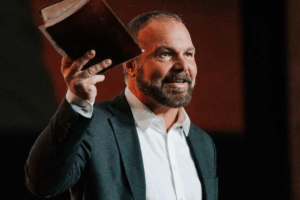In years past, Iowa was a very homogenous state, socially, culturally, and politically. In fact, in the 1980 presidential election, 95 of the state’s 99 counties voted for Ronald Reagan.
The lone holdouts were the liberal-Democrat strongholds of Dubuque, Johnson, Des Moines, and Wapello counties. The Farm Crisis just a few years later, the rapid push for economic diversity, and an influx of new people to repopulate the state have changed things dramatically.
Iowa has become a divided state along a number of geographic, social, cultural, and political lines. And when it comes to the first-in-the-nation caucuses, in presidential years, those divisions become most apparent.
For Republicans, some of Iowa’s counties are among the most conservative in the country, and voters in those areas insist on candidates who will protect life, defend traditional marriage, and honor God. For Democrats, some of Iowa’s counties are among the most liberal in the country, pushing for unlimited abortion on demand, gay “marriage,” and the removal of God from the public square.
So, let’s look at the extreme ends of this polarization: Sioux County in northwestern Iowa and Johnson County in eastern Iowa.
Sioux County
According to the 2010 Census, Sioux County, which borders South Dakota along the Big Sioux River, had a population of 33,704, of which 97.3 percent are white. Of the 10,693 households in the county, 69.4 percent were married couples living together, and 11.4 percent were households with a single elderly person.
The median household income there is $40,536, and $45,846 per family. The divorce rate in Sioux County is 1 in 14 families. As of 2011, 80 percent of the people there were descendants of Dutch immigrants, and 80 percent were members of major denominational churches.
Sioux County also is home to two Christian colleges, two Christian high schools, and half a dozen Christian K-8 or K-6 schools. It also boasts nearly 300 homeschool families, most of whom are members of the Network of Iowa Christian Home Educators.
Politically, it is a very conservative county. According to the Jan. 4 updated voter registration numbers supplied by the Iowa Secretary of State’s Office, there are 14,378 active Republican voters in the county, compared to 3,993 with no party affiliation and 1,612 active Democrat voters.
The last time a Democrat carried Sioux County in the presidential election was Franklin D. Roosevelt in 1936. In the 2012 congressional election, U.S. Rep. Steve King won the Fourth District with 53 percent of the vote, but he received 83 percent of the vote in Sioux County.
Johnson County
According to the 2010 Census, Johnson County, which is home to the first state capital, Iowa City, and the University of Iowa, is the fifth-most populous county in the state with 130,882. Of that, 90.1 percent are white, and of the 44,080 households in the county, 43.9 percent were married couples living together, and 5.6 percent were households with a single elderly person.
The median household income there is $40,060, and $60,112 per family. About 15 percent of the population—5.6 percent of families—in Johnson County live below the poverty level. There isn’t any predominant ethnic background, and the county is home to just one K-8 Christian school. But it is home to two facilities that perform abortions.
Politically, it is a very liberal county. According to the Jan. 4 updated voter registration numbers supplied by the Iowa Secretary of State’s Office, there are 37,493 active Democrat voters in the county, compared to 31,012 with no party affiliation and 17,546 active Republican voters.
No one can remember the last time a Republican carried Johnson County in any election. In the 2012 congressional election, U.S. Rep. Dave Loebsack won the First District with 56 percent of the vote, but he received 65 percent of the vote in Johnson County.
It may seem counterintuitive, but both counties are very important to candidates from opposite ends of the spectrum, but for different reasons. For Republicans, Sioux County is a chance to lock down a good chunk of the party base, while Johnson County is a chance to win over precincts with only a handful of votes.
For Democrats, it’s just the other way around. That’s why retail politics, and completing a 99-county tour of the state, are still very important to any successful Iowa Caucus campaign, regardless of one’s political affiliation.
Next week, we’ll look at the Democrat caucus process.
See an error in this article?
To contact us or to submit an article





















